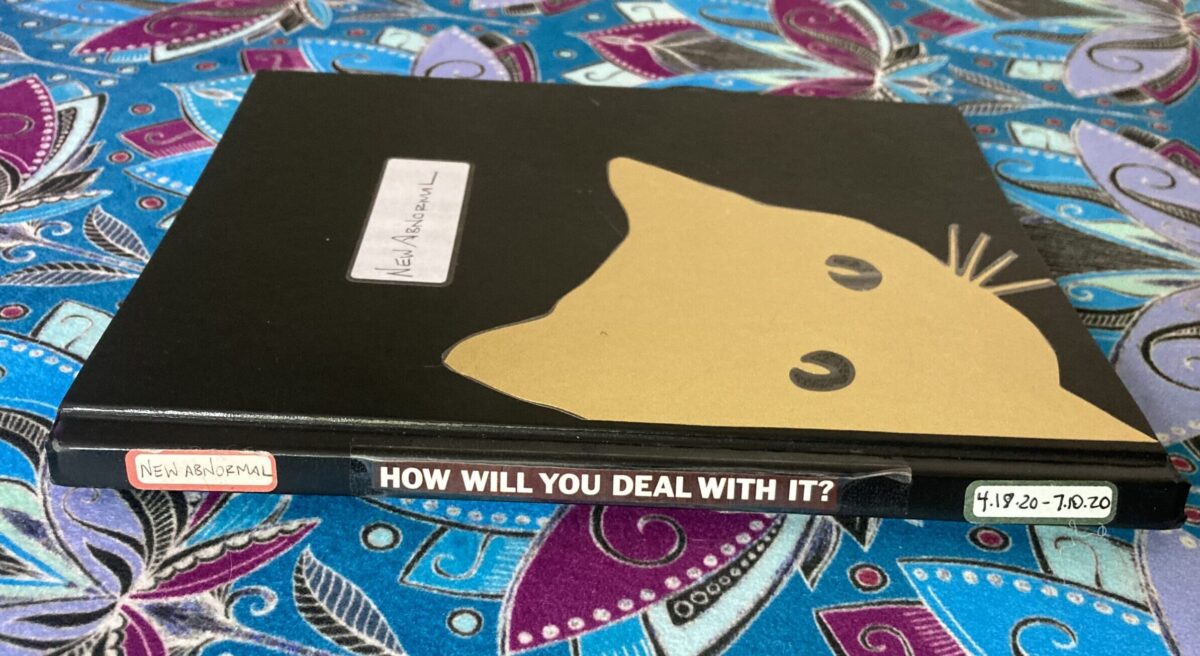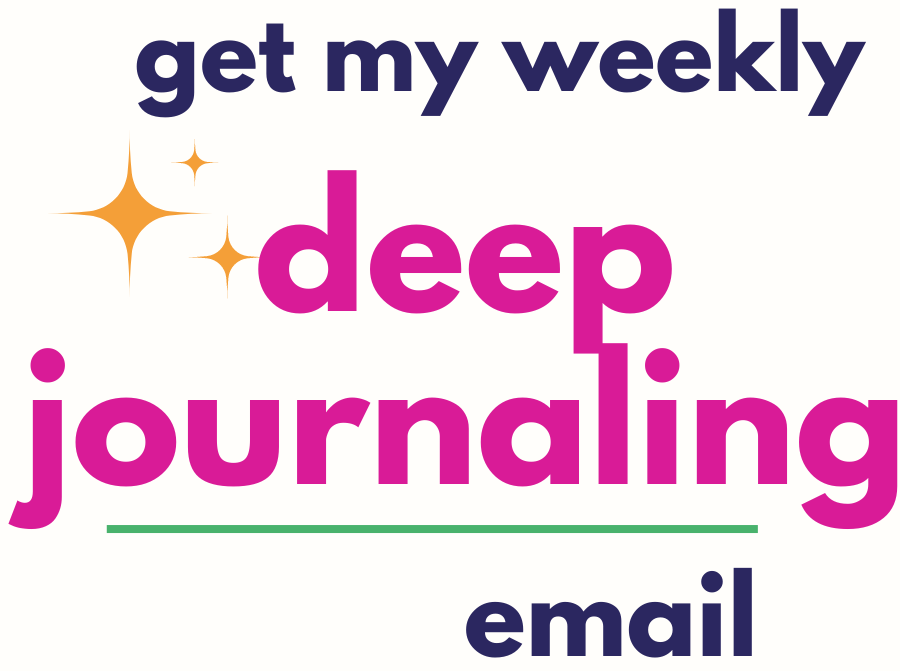Ready to pick out your new journal and get started? Hold on – you’ve got a lot of decisions to make.
Hardcover? Leather? Spiral-bound? Composition? Artisan? Leather spiral-bound? Hardcover artisan? Hardcover spiral-bound composition? Oh the choices! It boggles the mind.
No worries – I’ll take a look at the various options and give you some food for thought when you’re deciding on the best journal for you, based on where and how you plan to write.
The below video is a tour of my notebook choices through the years. It’s from but the only thing that’s changed is I’ve added another 60 Blueline Notebooks to the tally. You can also just read on. This article covers most of the same topics.
First, a Word on “Beautiful” Journals
Honestly, if you’re eager to start journaling, anything with paper will suffice. You can get started for less than a buck by stopping at the nearest drug store right now. Don’t get paralyzed searching for the “perfect” journal.
All of the options below – such as binding, paper weight, and cover style – are purely recreational. Don’t get caught up in not being able to afford an extravagant, beautiful journal.
Beautiful journals are over-rated, anyway. They’re often designed by people who have never written in a journal before. I have the heart of an artist but the brain of a logician. First and foremost, a journal should be usable; form follows function.
Furthermore, you may feel pressured to compose profound and noble works when confronted with a pigment-dyed suede journal with an embroidered cover and handmade paper. Not the kind of expectations that foster uninhibited exploration. A composition notebook from Target can feel a lot less intimidating when you’re just getting started.
I love beautiful journals but I rarely enjoy writing in them. They’re often impractical – too delicate, too small, unlined, lacking proper paper. I’ve reconciled this dilemma by allowing myself to buy beautiful journals when I see them, or receive them as gifts, and keep them on my shelf, forever blank. Collector’s items, if you will.
There’s nothing sadder to me than a beautiful journal abandoned after only one entry. If you want to get started but don’t have the “perfect” journal in hand, let it be the carrot on your stick. Promise yourself that if you stick with journaling and finish this cheapie notebook, you’ll treat yourself to a special journal.
Moving forward, here are a couple of points to keep in mind when picking out your new blank book:
1. Size and Weight
When deciding on size, it might be helpful to think about where you’ll most likely write. If you’ve got your eye on an enormous hardbound volume but you never write at home, keep in mind you’ll need to lug that thing with you whenever you leave the house. If your journal is prohibitively large, you may resist carrying it with you and miss out on impromptu writing opportunities. Bad move!
On the other hand, you don’t want your journal to be so small that you feel confined while writing it and spend more time turning pages than filling them up.
It took me awhile to find the right size page for me, where I had adequate space to write without feeling overwhelmed by the expanse of blankness. I also don’t like to spend more than three months in one journal, otherwise I feel weighted down by my past. So I need a book with adequate writing room but the right number of pages so I can wrap it up within a few months.
Using a smaller notebook can serve as a creative tool, as well – Jack Kerouac’s dreamy Book of Blues is a collection of poems composed on single pages of his pocket-sized notebook. Sometimes being limited by space can make you choose your words more carefully. While this is a good creative exercise, it’s not necessarily the best format for free writing in your journal.
2. Binding
Like journal size, the type of binding you choose may also be related to where you plan to write. The main choices are spiral-bound or sprial-free (also called “perfect bound”).
Spiral bound notebooks are great when privacy is a concern or space is limited since you can expose only the side you’re writing on. As a bonus, standard soft cover spiral bound notebooks are also inexpensive. Personally, spiral bound notebooks don’t work well for me because the spiral gets in my way when writing on the left side but your mileage may vary.
If you favor the home-made journals or artisan paper, you may come across “stab-binding,” which is a type of sewn binding that can be done by hand. These journals may require more gentle handling, so they work best for people who mostly write at home.
Top-bound notebooks, also known as reporters’ notebooks, can come in handy if you’re highly mobile or trying to write surreptitiously. For awhile I had a daily habit of writing on the subway, so I got a pocket sized reporter’s notebook – the kind that flips open at the top – so I could easily compose while standing up on the moving train. (My handwriting, however, did not convert as easily.)
If you write at a table, make sure whichever binding you choose lays flat when open or the journal will be difficult to write in.
3. Cover
Hardcover journals tend to be more durable than soft cover. If you write in random places like cars and waterbeds, a hardcover journal will provide a firm writing surface.
Soft cover journals are more flexible, obviously, and often less expensive. Unless we’re talking about Moleskines, which are beautiful journals with leather-like covers that cost significantly more than your average Mead.
4. Paper
The paper you prefer may be dependent on your writing instrument of choice. Or it may simply be a matter of personal taste. I write with liquid, inky pens that bleed through thin paper, so I choose my journals based on their ability to accommodate writing on both sides of the sheet. Thick, textured pages with a good “tooth” work best for me. And I require college-ruled sheets to keep me in line.
If you plan to add collage, painting, or affix photographs to the pages of your journal, be sure to select paper that can withstand the embellishments. You might try a hardbound sketch book with heavy stock paper, sold at art supply stores.
Some folks really like rough-hewn, handmade paper – the kind with tiny leaves and flowers in it. Others prefer standard three-hold-punched looseleaf. Or perhaps you enjoy classic, plain unlined white paper.
It’s totally up to you. If you’re not sure what works best for your writing style, experiment!
5. Refillables
If you enjoy carrying and writing in a beautiful journal but don’t want to spend $50 each time you need a new one, you can invest in a high quality cover and buy replaceable refills.
I found a fabulous hot pink pleather journal with a built-in bookmark and an elastic wrap. It works with the generic composition notebooks you can buy for a buck, so it was very economical. I used it for several years before moving on to a journal that can withstand my newfound devotion to Pilot Precise V7 ink pens.
I tend to be quite loyal when I find a perfect journal. In this case, it’s the Blueline notebook. I also have a habit of buying them by the case since I’ve gotten quite attached to specific styles that were later discontinued. I fell in love with these hardcover, perfect-bound journals featuring a pen loop and an elastic wrap to keep it closed – great for me since I stuff all kinds of debris in my journals. The outside of the pages were painted an array of colors. I used these religiously for several years until they disappeared from stores without warning.
I was inconsolable until I discovered the Blueline notebook, which is even better. You can read about my sordid affair with these particular journals in Blueline Notebooks: a Love StoryBlueline Notebooks: a Love Story.
If you keep up your frequent journaling – and I hope you do! – you’ll have lots of opportunity to try out different types of journals and discover which works best for you.




